AWS Certified Developer - Associate
Application Integrations
SQS Basics Demo
This guide demonstrates how to work with Amazon Simple Queue Service (SQS) by creating your first queue and exploring its configuration options. Using SQS, you can decouple application components, enabling a flexible and scalable architecture.
Getting Started
Begin by searching for SQS in the AWS Console. Once located, create a new queue and choose between a Standard queue and a FIFO queue. For this demo, we will use a Standard queue.
Name your queue "newUser". This queue simulates an application process where each new user registration triggers the sending of a message. The message, containing user details, can then be processed by other parts of your application.
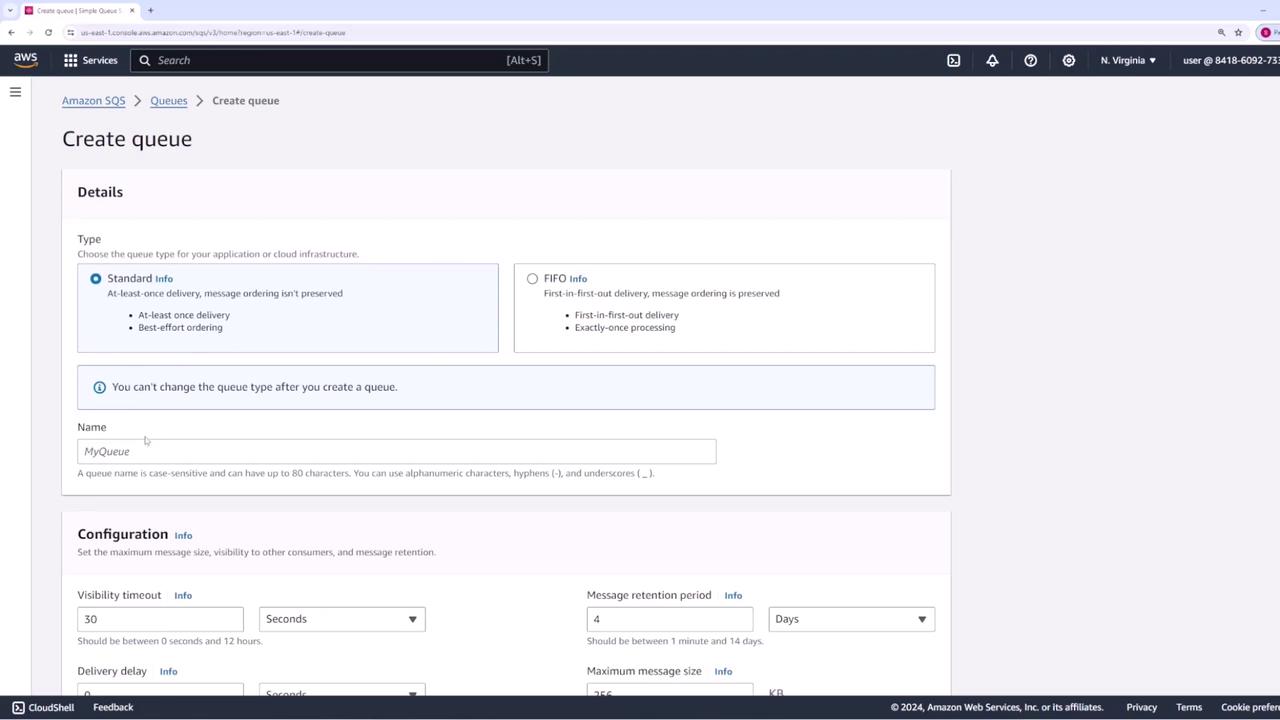
Queue Configuration Options
Below the queue name, several configuration settings are available:
- Visibility Timeout: The period during which a message remains invisible to other consumers.
- Message Retention Period: The duration, from one minute to 14 days, that a message is retained in the queue.
- Maximum Message Size: Currently set at 256 kilobytes.
Other options include encryption settings. You can let SQS manage the encryption key or use AWS Key Management Service (KMS) for more control. In this demonstration, encryption is left disabled.
The default access policy permits only the queue owner to send and receive messages. You can adjust this policy to allow additional AWS services or accounts. Below are two examples of access policies:
{
"Version": "2012-10-17",
"Id": "__default_policy_ID",
"Statement": [
{
"Sid": "__owner_statement__",
"Effect": "Allow",
"Principal": {
"AWS": "841868927337"
},
"Action": "SQS:*",
"Resource": "arn:aws:sqs:us-east-1:841868927337:newUser"
}
]
}
{
"Version": "2012-10-17",
"Id": "__default_policy_ID",
"Statement": [
{
"Sid": "__owner_statement",
"Effect": "Allow",
"Principal": {
"AWS": "841868927337"
},
"Action": "SQS:*",
"Resource": "arn:aws:sqs:us-east-1:841868927337:newUser"
}
]
}
Note
For this demonstration, all settings remain at their default values before creating the queue.
Interacting with Your Queue
After successfully creating your queue, there are multiple methods to interact with it. While most applications use the AWS SDK to publish and retrieve messages programmatically, the AWS Console also provides options for manual testing. The console allows you to simulate both message production and consumption.
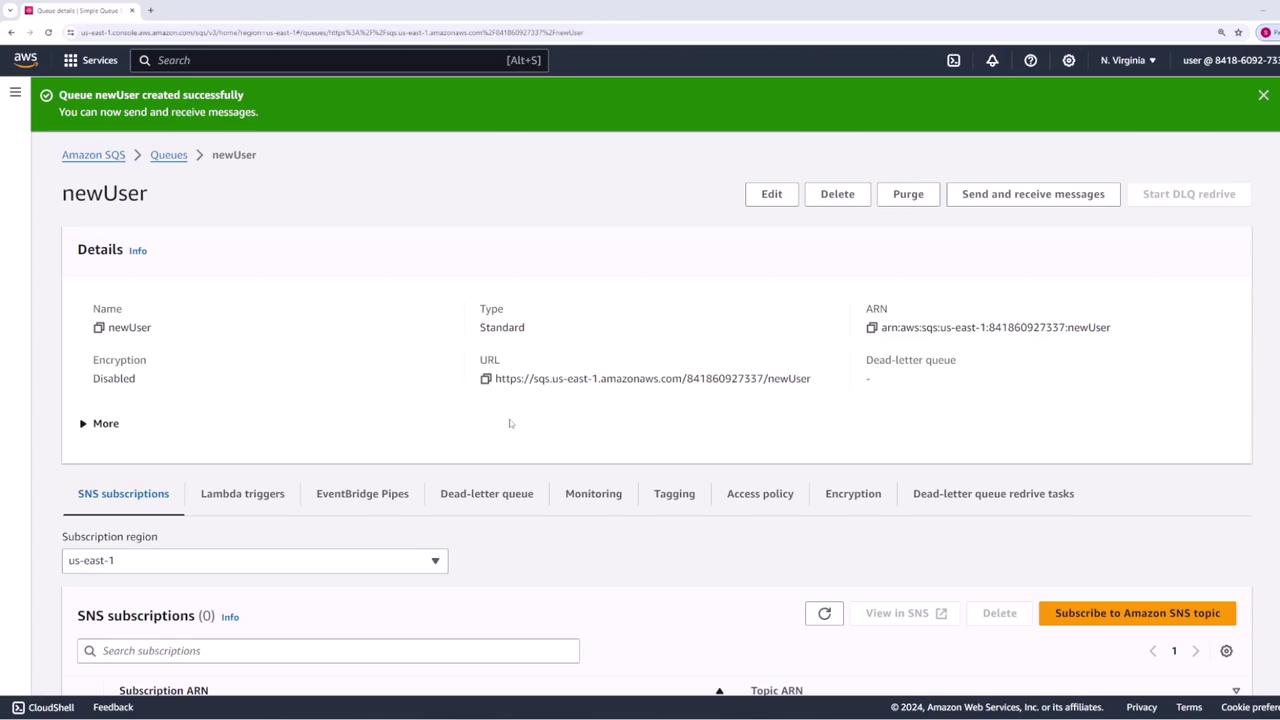
Sending a Message
To test the queue functionality, start by sending a message. For example, if the "newUser" queue is meant to capture registration details, you might send the following JSON message with an email address:
{
"email": "[email protected]"
}
After sending, the console confirms that the message has been successfully sent.
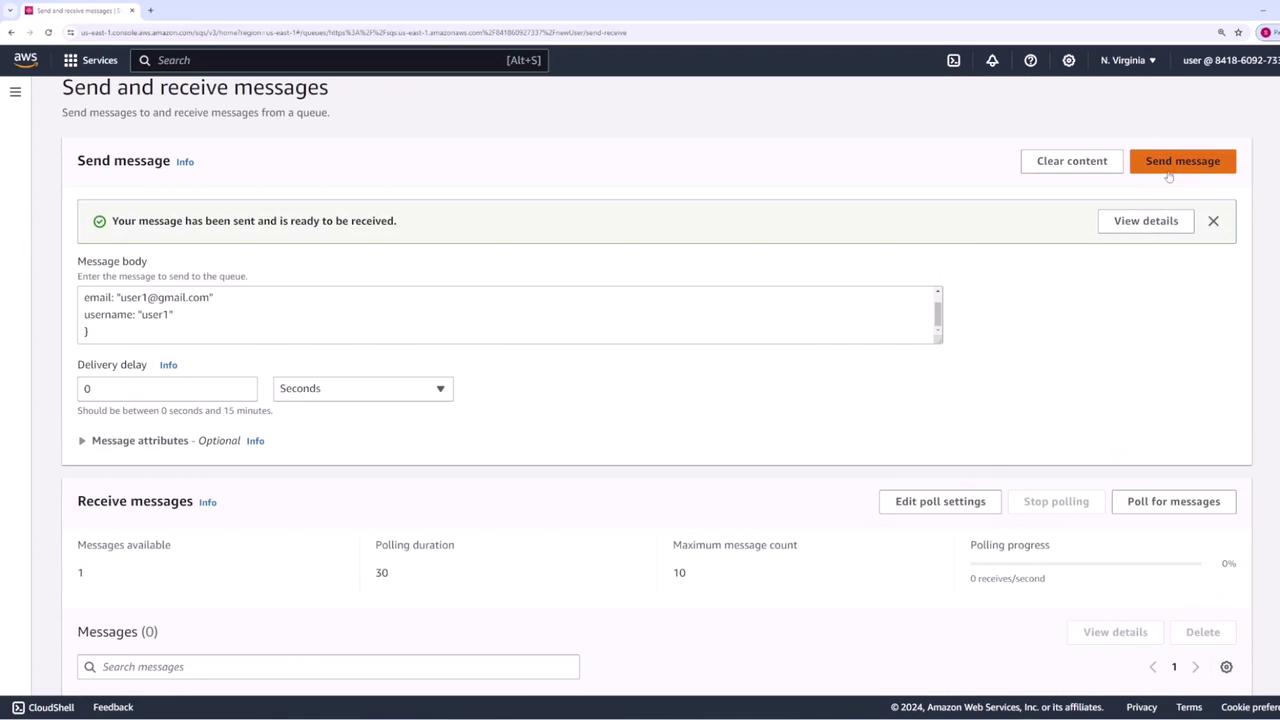
Retrieving and Processing Messages
To retrieve messages, click the "Pull for messages" button in the consumer view of the AWS Console. The detailed view of a selected message includes:
- Message ID
- Message body (the data transmitted)
- Attributes such as visibility timeout and timestamps
- MD5 checksum of the message body
- Sender account ID
After your application processes a message, it is important to delete it to ensure it is not reprocessed.
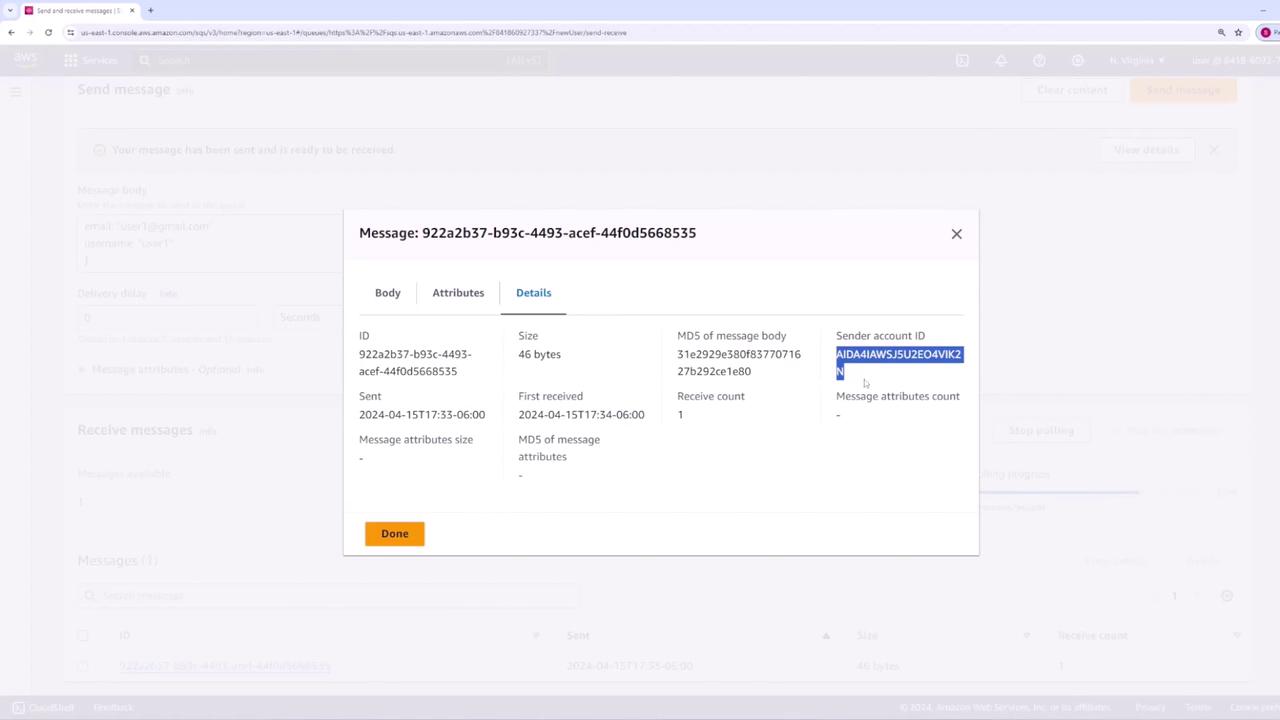
Once the message is deleted, the console will display a notification confirming its removal.
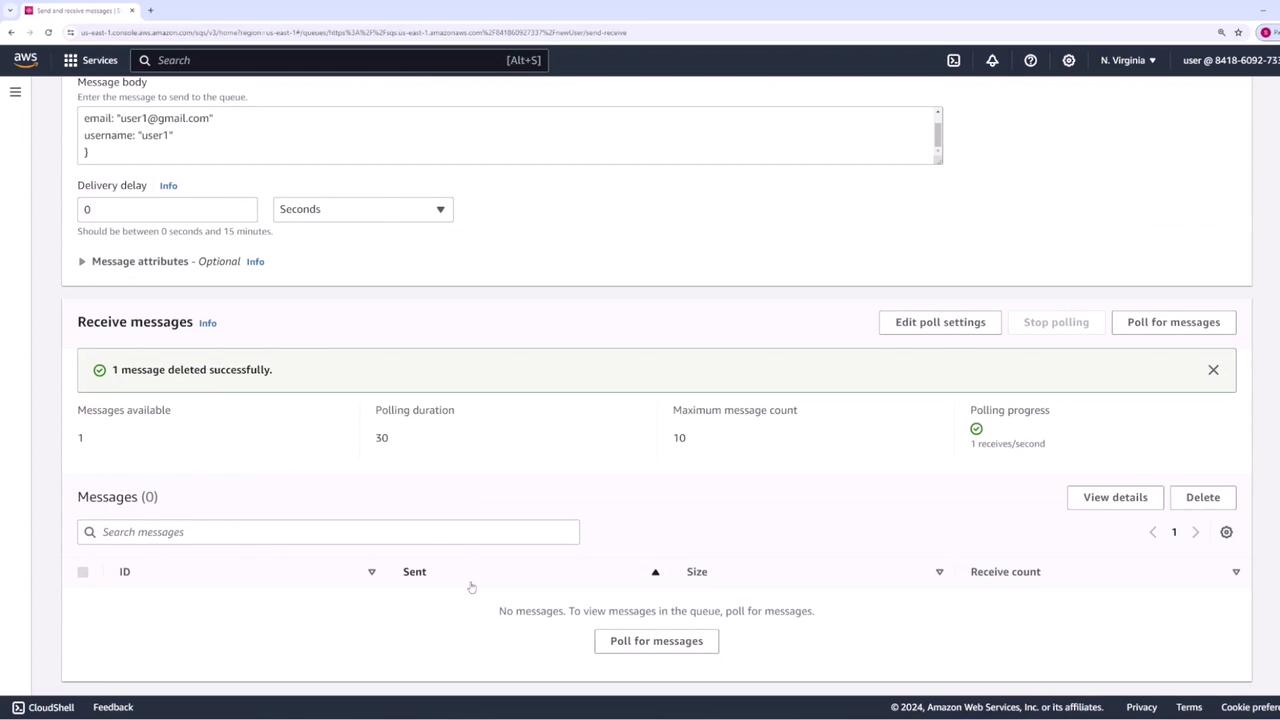
Note
Remember to delete processed messages to avoid duplicate processing and to maintain the efficiency of your queue.
Summary
The SQS workflow consists of your client sending messages to the queue, while a consumer application pulls and processes these messages. This decoupled architecture not only enhances scalability but also ensures that each component of your application can evolve independently.
For additional details on integrating SQS with your applications, consider exploring the AWS SQS Documentation.
Happy queueing!
Watch Video
Watch video content